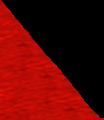| The U.S. Children’s
Bureau (USCB), was established by Congress in 1912 and is perhaps
best known for its campaigns to reduce infant mortality and eradicate
child labor. The first federal agency to be headed by a woman, Julia
Lathrop, it was also the most important home in the federal government
for advocates of adoption regulation. The USCB encouraged reforms
in state adoption laws, disseminated original research, and sponsored
conferences on child placement issues and priorities. The first
major conference on child welfare standards, for example, took place
in 1919 under USCB auspices. Its published summary included a resolution
on desirable practices in child-placing and supervision drafted
by Edmond Butler, Executive Secretary of New York’s Catholic
Home Bureau, the first Catholic agency to use family homes rather
than congregate institutions. In adoption, as in many other issues
related to American family life, child
welfare was the paramount concern of the USCB. It worked closely
with organizations like the Child Welfare League
of America to extend the power of government and allied professionals
over the adoption process. Minimum
standards were a typical strategy.
The work done by the USCB on adoption was often galvanized by scandals
related to baby farming
and black market adoptions. USCB field agents documented deplorable
conditions in maternity homes and orphanages and spearheaded investigations
of placing-out and interstate traffic from the 1910s through the
1960s. Although the USCB itself provided no adoption services, thousands
of adults seeking children wrote to the USCB in hopes of realizing
their dreams. Each inquiry was answered promptly and respectfully;
letter-writers were referred to local or state agencies whose staff
and standards were deemed reliable. From its inception, the USCB
worked to educate the public about the importance of regulating
adoption. Pre-placement investigation, post-placement supervision,
and lengthy probationary periods, according to the USCB, were the
minimum standards necessary to safeguard children and adults and
insure that adoptive families turned out well.
Today, the U.S. Children’s Bureau is located in the Department
of Health and Human Services Administration for Children and Families.

Cartoons for baby-week, sposored by
the U.S. Children's Bureau, appeared in many newspapers. This one
depicted babies asking for love, intelligent care, protective laws,
birth registration, and “fathers who think,” among other
things.
|



